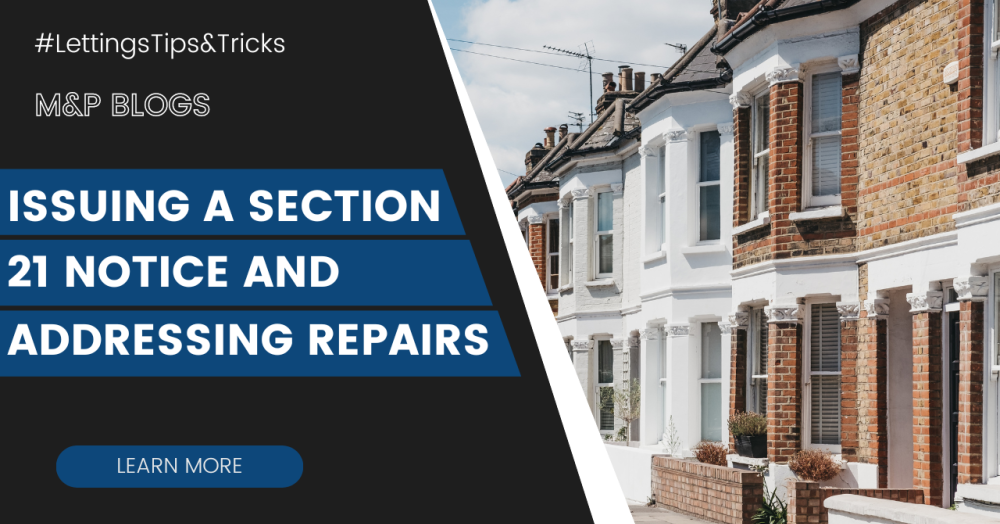As your letting agent, we want to guide you through the process of issuing a Section 21 Notice while emphasising the importance of addressing any outstanding repairs at the time of notice issuance.
Here is a step-by-step guide:
1. Understand the Purpose of a Section 21 Notice:
A Section 21 Notice is a legal tool that allows landlords to regain possession of their property, typically at the end of an Assured Shorthold Tenancy (AST).
2. Legal Requirements:
Ensure that you comply with all legal requirements when issuing a Section 21 Notice. This includes having protected the tenant's deposit and serving all necessary documentation.
3. Check Tenancy Agreement:
Review the terms of the tenancy agreement to ensure that you have valid grounds for issuing a Section 21 Notice. Common reasons include the end of the fixed term or serving notice during a periodic tenancy.
4. Addressing Outstanding Repairs:
Before issuing a Section 21 Notice, it is crucial to address any outstanding repairs or maintenance issues within the property. Failure to do so may affect the validity of the notice.
5. Conduct a Property Inspection:
Schedule a thorough property inspection to identify and address any necessary repairs. This ensures that the property is in good condition and complies with health and safety standards.
6. Documentation of Repairs:
Keep detailed records of all repairs carried out. Documenting the repairs provides evidence that you have fulfilled your responsibilities as a landlord and strengthens your position in case of disputes.
7. Issuing the Section 21 Notice:
Once repairs are completed, proceed with issuing the Section 21 Notice to the tenant. Clearly state the reason for the notice and the date by which possession is required.
8. Communicate with the Tenant:
Maintain open communication with the tenant throughout the process. Inform them of the reason for issuing the notice and the steps they need to take.
9. Property Viewings:
If the property is to be re-let, coordinate with your letting agent to conduct viewings. Ensure that these are carried out in a manner respectful of the tenant's rights and privacy.
10. Return of Deposit:
Handle the return of the tenant's deposit in accordance with the tenancy agreement and legal requirements.
11. Record-Keeping:
Keep thorough records of all communications, inspections, repairs, and the Section 21 Notice itself. This documentation can be invaluable in the event of any disputes.
12. Seek Legal Advice if Necessary:
If you encounter any legal complexities or challenges during the process, consider seeking legal advice to ensure that all actions are in compliance with relevant regulations.
Remember, a well-executed Section 21 process, along with addressing repairs, contributes to a smoother transition and minimises potential complications.
If you have any questions or require further assistance, please do not hesitate to contact us.


